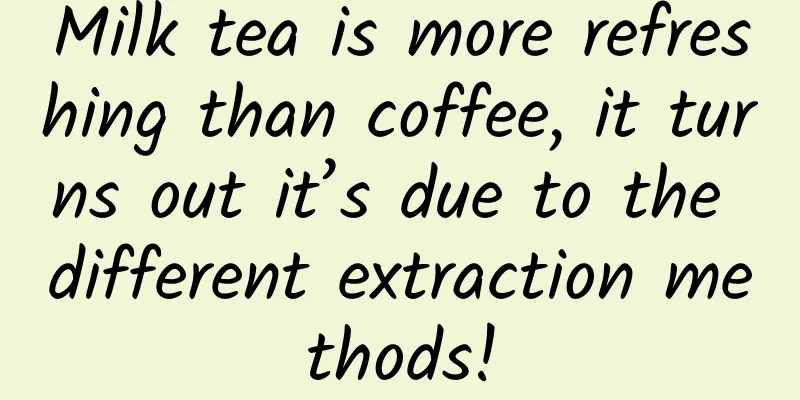Why is it snow "flowers" instead of snow "grass" or snow "trees"?

|
Snow is a pure white gift from nature to people. If you just hide in a warm house and watch the falling snowflakes through the glass window, you will not be able to experience the surprise of falling snow from the sky. Sometimes the snow is like sugar, crackling when it falls, and the small snowballs bounce when they fall on the ground, and rustle when they hit clothes; sometimes the snow is like ice crystals, sparkling like diamond stardust under the street lights... When the last snowflake falls to the ground and melts, have you ever wondered: Why is it snow "flowers"? Image source: Pixabay If you observe carefully when it snows, you will find that the feeling of each snowfall is not the same. For example, sometimes goose-feather-like "snowballs" fall quietly from the sky, and fall on the ground like fluffy cotton wool. Sometimes there is a fine snowflake flying in the sky, and if you look closely, you will see that it is a small snowflake dancing in the air alone. Sometimes the snow is like dust, and the fine snow falls on your body like small white dots, and the ground is covered with a layer like chalk dust. There is only one kind of rain, but there are thousands of ways to snow. To explore the reason, we must also understand it from a microscopic perspective: different environments form different snowflakes, and the appearance of snowfall is also different. Frozen snowflakes Li Bai said that the snowflakes in Yanshan were as big as mats, and they were blown down to Xuanyuan Terrace. This snow like a mat is not actually snowflakes, but snowflakes. A group of snowflakes is composed of a few or hundreds of snowflakes, commonly known as "goose feather snow". These snowflakes are in the form of six thin petals, sometimes with complex branches, and each petal looks like a branch, which allows these snowflakes to connect and stick together. The formation of goose feather snow has high requirements for the environment. Generally speaking, it is easy to appear when the temperature and humidity are high. For example, I once encountered palm-sized goose feather snow in the Yili River Valley in Xinjiang around the beginning of spring. The shape of snowflakes depends mainly on the temperature and humidity of the growing environment. For example, in extremely cold environments, hexagonal snowflakes are easily formed, which are often called diamond dust. Around -15℃ is the main environment for the formation of six-petal snowflakes, while at around -5℃ needle-shaped snowflakes and hexagonal snowflakes will appear. Different humidity affects the specific shape of snowflakes. For example, in the same -15℃ environment, wide 6-petal snowflakes are formed when the humidity is lower, and thin 6-petal snowflakes are formed when the humidity is higher. If the humidity is higher and the water vapor is more abundant, large snowflakes with complex branches will be formed. How big can the largest snowflake be? I have seen huge snowflakes with a diameter of 1 cm, which are called "monsters" among snowflakes. However, in historical records, there have been snowflakes with a diameter of 30 cm, but there is no photographic evidence. Snowflake's Travels There are some laboratories in the world that can artificially produce snowflakes. As long as the temperature and humidity are changed, different snowflakes will condense. However, no matter how good the laboratory is, the snowflakes produced are far less complex than those in nature. Why? Snowflakes do not form in a fixed environment. As snowflakes fly up and down, the growth environment is constantly changing. For example, a hexagonal snowflake grows thin branches on its original structure when it is placed in a high humidity and high temperature environment. If it is placed in a lower humidity environment, a hexagonal decoration will grow on the top of each branch, and a complex snowflake will be truly completed. If a snowflake grows in a low temperature or dry environment when it is young, it will grow into a prism. If it travels to a relatively high temperature place, it will form a "spool" shape. Image source: Pixabay However, for a snowflake, this description is only a synopsis of its journey, and more details of the story are far from being described. Snowflakes have ever-changing shapes, and under a microscope, the most amazing thing about snowflakes is the texture and structure inside. Concentric textures, radial textures, cute little bubbles, lace structures, frozen drops, curling edges... Various features make each snowflake so different. Take frozen drops as an example, which are small ice particles that stick to the falling snowflakes, and look like a layer of pearls on the snowflakes. Due to the addition of ice particles, the snowflakes become very heavy, so they fall very fast, and there is no adhesion between them. This is the kind of snow that looks like sugar. Look at my seventy-two transformations People always say that snowflakes have six petals, and six petals are the common feature of snowflakes. But is it true? There are many types of snowflakes that do not have six petals. In historical records, people hand-painted snowflakes with 12, 18, and even 24 petals. There are still many different academic opinions on how they were formed. One of them is that binucleated ice crystals may be the reason for the formation of multi-petal snowflakes. This binucleated ice crystal has a double-layer structure in the shape of an "I". Due to the influence of electromagnetic force, the angles of the upper and lower layers are staggered to a certain extent. When they continue to grow, 12-petal snowflakes are formed. In addition to the 12-petal snowflake, the 3-petal snowflake is a more magical one. The 3-petal snowflake is not formed by breaking the 6-petal snowflake, but is a natural triangle or clover shape. This type of snowflake is mainly formed because the initial ice crystal has a certain degree of damage. When it continues to grow, it is affected by gravity and the six corners are no longer treated equally. Finally, it grows into a triangle shape. If it grows further, it will form a clover shape. At this point, some people may ask, how many petals can a snowflake have? Among the snowflakes discovered so far, there are two and four petals that are bilaterally symmetrical, and three, six, 12, and 18 petals that are radially symmetrical. They are either even numbers or related to 6. This is because the bricks and tiles used to build snowflakes - water molecules - have a uniform "form", and the crystals they form also have a similar form. This similarity between macroscopic and microscopic forms is the so-called "fractal". In layman's terms, it means that no matter how different they are, they still remain essentially the same. The last snow If you just missed the last snow, this is no excuse for not trying to find out the secrets of snowflakes. You can "grow" snowflakes if you have a refrigerator! The materials are all around you: a paper cup, a piece of plastic foam, several long needles, and some paper towels. You need to do this: 1. Soak a paper towel in water and place it at the bottom of a paper cup. 2. Pierce several needles through the foam plastic to reveal the long needle tips. 3. Point the needle tip downward and cover the cup with the plastic foam. 4. Place the cup in the freezer. 5. Waiting… 6. After about 15 minutes, take out the cup, open the foam plastic lid, and you can see the snowflakes on the needle. Source: Chongqing Science and Technology Museum Author: Zhang Chao, popular science writer. Review experts: Huang He, Li Chunli, Chen Tao and Xu Xiaoping. Disclaimer: Except for original content and special instructions, some pictures are from the Internet, non-commercial use, only as popular science materials, copyright belongs to the original author, if there is any infringement, please contact to delete |
Recommend
Help, I can't control my appetite during the holidays? Here is a weight control recipe that won't make you hungry or gain weight →
For many people, losing weight is a lifelong purs...
With simple promotional software, you can easily earn thousands of dollars a month, plus there are 2 additional sources of income!
Sell software, get multiple benefits with one e...
Adobe China employee reveals the inside story of its closure
Many people say that the layoffs are due to poor ...
The Ministry of Industry and Information Technology responded to netizens: Caller ID fees will be gradually eliminated within 3-5 years
Recently, a netizen of People's Daily Online ...
Mushrooms contain heavy metals and should not be eaten? The truth is not that scary
"Mushrooms contain heavy metals and cannot b...
iOS runtime practical application: member variables and properties
[[164431]] original Preface Before you begin, it ...
315 Public Relations Firefighting Guide! (Collect now)
The legendary annual International Butt Wiping Da...
Nezha of the people, created by the people! An open letter from Nezha Auto's Zhang Yong to users
On June 22, Nezha Auto held a "Creation"...
Apple confirms iPhone/iPad will become bricked if the time setting is incorrect
On February 16, it was reported a few days ago th...
APP promotion: Kuaishou advertising case of Kuaiying video editing AAP!
The most popular thing now is short video. This i...
The history of Chaozhou flavor
Written by Wei Shuihua Header image | TuChong Cre...
What to do if your child doesn’t like to study? Confucius has already thought of it for you!
Mixed Knowledge Specially designed to cure confus...
11 fragments of observations and thoughts about B station
Bilibili has been around for 11 years. As a senio...
WeChat "Mini Programs" are going to kill apps? Entrepreneurs may not think so
"What is a mini program? A mini program is a...
Domestic phones have no screens available, Samsung OLED will only be enough for Apple next year
As the growth of the global smartphone market cont...









